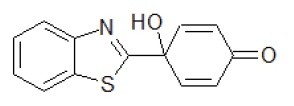NCI-HPN-F1A Mam Cell Line Product
NCI-HPN-F1A Mam is produced from spontaneously transformed primary cell cultures without genetic, viral or chemical manipulation. This murine cell line is derived from normal epithelial cells in the mammary […]
NCI-HPN-F1A Mam is produced from spontaneously transformed primary cell cultures without genetic, viral or chemical manipulation. This murine cell line is derived from normal epithelial cells in the mammary […]
NCI-HPN-F1G Mam is produced from spontaneously transformed primary cell cultures without genetic, viral or chemical manipulation. This murine cell line is derived from normal epithelial cells in the mammary […]
NCI-HPN-F1I Mam is produced from spontaneously transformed primary cell cultures without genetic, viral or chemical manipulation. This murine cell line is derived from normal epithelial cells in the mammary […]
NCI-HPN-F23-Mam is produced from spontaneously transformed primary cell cultures without genetic, viral or chemical manipulation. This murine cell line is derived from normal epithelial cells in the mammary gland._x000D_ […]
NCI-HPN-F24-Mam is produced from spontaneously transformed primary cell cultures without genetic, viral or chemical manipulation. This murine cell line is derived from normal epithelial cells in the mammary gland._x000D_ […]
NCI-HPN-F43-Mam is produced from spontaneously transformed primary cell cultures without genetic, viral or chemical manipulation. This murine cell line is derived from normal epithelial cells in the mammary gland._x000D_ […]
NCI-HPN-F44-Mam is produced from spontaneously transformed primary cell cultures without genetic, viral or chemical manipulation. This murine cell line is derived from normal epithelial cells in the mammary gland._x000D_ […]
[…] understand the underlying molecular mechanisms of resistance. Image: MCF7/S0.5 cells stained for oestrogen receptor expression NCI-HPN-F cell lines with chromosomal abnormalities Derived from mouse mammary glands, NCI-HPN-F cell lines demonstrate recurrent […]

[…] PMX464, is a potent in vitro antitumour activity was observed in HCT 116 and HT 29 human colon as well in as MCF-7 and MDA 468 human breast cancer cell lines.

A new class of molecule (4-hydroxy-4-hetarylcyclohexa-2,5-dien-1-ones) bearing a new pharmacophore (quinols’) with potent activity against renal, colon and breast cell lines in the NCI 60-cell panel.

Please note we may take up to three days to respond to your enquiry.
CancerTools.org uses the contact information provided to respond to you about our research tools and service. For more information please review our privacy policy.